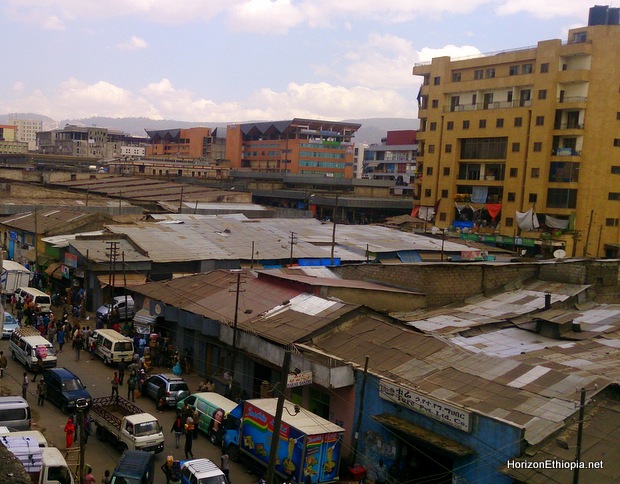

Several months ago, Zeway Trading PLC offered the rough equivalent of a Lifan hatchback/m2 for a plot of land in Mercato. Public opinion overwhelmingly seems to think this is crazy.
Editor’s note: Ethiopian Business Review has previously published an edited and summarized version of this article in its June/July, 2015 issue.
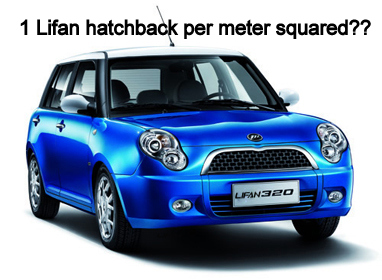 It’s been one of the hot topics in the city of late – the infamous bid of ETB 305,000 per square meter offered up by Zeway Trading PLC for a 449m2 plot of land in Mercato several months ago. That’s just over USD 15,000 for a single square meter. You can buy a brand new Lifan hatchback for about that price. Or 449 of them for the same amount as was offered for the plot.
It’s been one of the hot topics in the city of late – the infamous bid of ETB 305,000 per square meter offered up by Zeway Trading PLC for a 449m2 plot of land in Mercato several months ago. That’s just over USD 15,000 for a single square meter. You can buy a brand new Lifan hatchback for about that price. Or 449 of them for the same amount as was offered for the plot.
Predictably, reactions to the bid ranged from astonishment to disbelief given that it represented a fourfold increase from the previous high bid (65,000/m2 – itself more than three times the prior high). Conversely, there was little surprise when Zeway essentially abandoned its offer by declining to put down the required 20% deposit of just over ETB 27 million. But there were many other bids for this property which were in excess of ETB 200,000/m2 (as reported by Addis Fortune) which isn’t that far off from Zeway’s offer. Each one of these (taken individually) would have represented a record high for leasing land in Addis.
Given the fairly evident conclusion that Zeway’s bid was not in fact a giant aberration from all other bidders, we must assume that market wide forces are responsible for these new highs. To find out if there is any possible method to the seeming madness, we will use a theoretical offer of 250,000/m2 for the plot which would roughly represent the middle of the top echelon of bids in this auction.
Valuation Rationale
Before embarking on such an analysis though, it is worth pointing out that bids for urban land leases are inflated well beyond what is observed on the secondary market. This is primarily because in the latter case, such transactions must be paid for in cash while in the former, relatively generous credit terms are the norm. A review of some cash transactions consummated recently suggests that unit rates are somewhere north of 55,000/m2 for the Mercato area – by far the highest cash prices in the city but nowhere near lease auction offers.
So what is it about Mercato that justifies the prices implied by the recent auctions? While we could examine the possibility that bidders might have considered their potential purchase to be a hedge against inflation or were speculating prices would appreciate even more going forward, we are unlikely to find logical answers there. For one thing, inflation is at its lowest rate in Ethiopia in quite some time and in any case, there are clearly other areas of Addis (Bole, Old Airport, Kazanchis) where properties could be acquired for much less and be better suited for either purpose.
We are more likely to find answers by evaluating the asset’s projected financial performance based on some assumptions of usage, development costs and revenues. To do so, we will focus on what an investor could potentially realize from the development of rental property on the plot as this will allow us to use concrete, real world data in the form of prevailing rental rates for retail and office space in Mercato.
The following assumptions are used in the subsequent analysis:
- Structure built will be a 1B+G+7 resting on 85% of the plot
- 80% of the built up area can be rented
- Construction costs of 8000/m2, completion timeframe of 2 years
- Annual lease payments over 30 years of ETB 8.4 million/year assuming 9% interest
- Operating costs that average 5% of revenue
- Occupancy rate of 100% throughout the initial 10 year period
- 5% annual increase in rental rates
Most of the assumptions shown above are not only realistic, some of them are actually conservative given current context. For example, rental rates in Mercato have increased by a far higher percentage over the past 5 years. With regards to occupancy, retail space in particular (which will produce 80% or more of the revenue for such a structure) is frequently auctioned off sometimes months before it is even ready for a new tenant. Are these assumptions sustainable in the long term? We will revisit this topic a bit later on.
Rental rates – the real linchpin behind any possible business case for the skyrocketing property prices in Mercato – are assumed to start at 2,200/m2 for ground floor space and go down to 250/m2 for office space on the upper floors.
While the details of the calculations have been omitted here for brevity’s sake, the investment would return a profit starting in the sixth year of investment and only its fourth after being operational. Thereafter, it would generate annual returns several times its costs with a few instances over a span of 30 years, where it might have to expend capital funds for improvements. Some of the assumptions (such as a 5% increase in rents every year) are not likely to be sustainable over a 30 year period or even a perhaps much shorter one as we will get to shortly. But these are really only going to be of significance for determining how much more profitable this investment would be, not whether it’s viable or not. It most definitely is under the assumptions that current context could lead us to adopt and in fact comfortably so. Other investment metrics generally used for real estate, only strengthen that view.
Internationally, cash on cash rental yield (CoC) is a ratio used to establish the relationship between the purchase price of a property and the rental yield that can be expected from it. In simple terms, this figure represents the annual net cash flow as a percentage of the out of pocket costs for acquiring the property. The CoC for the developed property in this case would be 30% while in most cases, cash on cash returns of 10% for a real estate investment are considered great. The investment’s Loan-to-value Ratio is quite favorable for a real estate project in Ethiopia at almost 65% and could be higher if the buyer is able to finance some portion of the construction costs as well. A Debt Coverage Ratio of almost 3 (indicating that the investment’s Net Operating Income is almost 3 times the required debt payment) along with a Price/Rent ratio of 5.12 (indicating that it would take just over 5 years of rental income to cover the total costs of the property as developed) only adds emphasis to the viability of this investment.
This suggests then that Zeway’s bid for the Mercato plot (which isn’t far from the theoretical bid we used for our analysis here) is not in fact detached from reality at all (as some have implied). At most, a bit on the aggressive side. Most of the assumptions used are not overly aggressive given present day context and changes in them would only make marginal differences. However, there is one possible exception that could derail the scenario described in a significant way.
But before addressing that, let’s examine what it is that’s causing this seeming aberration of economic sense in Mercato to complete our understanding of what’s brought us to this point.
Cause & Effect
What makes this business case possible are the extraordinarily high rental rates commercial property in Mercato can currently command. As a matter of fact, the base rental rate of 2,200/m2 used for ground floor retail space can be easily surpassed in particular areas of Mercato including around Sidamo and Bomb Terras where the plot for auction was located. A space on the ground floor of just 9m2 can fetch as much as ETB 30,000/month yielding a rental unit rate of ETB 3,333/m2, 50% higher than the rate assumed. A small shop on the 3rd floor of a building in the Gojam Berenda area, rents for 900/m2 and a 40m2 space in the Merab Hotel area, rents for 2,000/m2.
The main point here is that rapidly escalating land lease rates in certain pockets of Addis are simply an effect brought about by the cause of the high rental rates prospective buyers believe they can extract after improving the property in question. So if there is something we should all be surprised at, it is how far these rental rates have gone up in so short a period of time. In some instances, tenants in Mercato report rents having almost doubled in just the last year.
But of course there is likely to be a root cause for the increase in rental rates as well. I believe the underlying reason to be a decrease in the effective supply of rental spaces.
A quick visit throughout Mercato will reveal that significant portions of rental inventory have been removed or compromised. Construction of the LRT has directly removed thousands of square meters of retail space around Mercato’s periphery. Furthermore, it has compromised an even greater portion by reducing accessibility along the route of construction. In addition, numerous redevelopment projects have demolished structures and in some cases wholesale areas such as at American Gibee and Goma Quteba. No less than 30,000m2 of land is being redeveloped within a 3-4 block radius of Merab Hotel, destined to replace the prime rental spaces demolished to make way for the new structures.
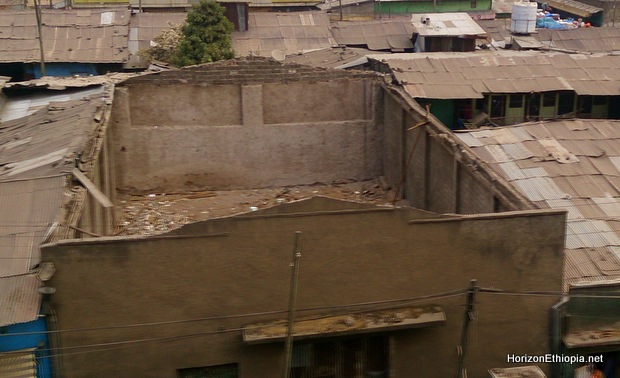
I believe all of the displacement such construction has caused, is resulting in an elevated level of market activity for rental space in Mercato which is causing rental rates to spiral upwards, thus providing the foundation for elevated lease rates by extension.
In my view, market fluctuations of this type are one of the reasons (and by no means the only ones) that the rate of urban development in Addis should be balanced between maintaining a certain level of currently usable space, renewal of existing space and new development on unused land. That would facilitate improved containment of runaway lease prices while also satisfying the clear need for redeveloping our city into a modern metropolis befitting its stature as the capital of Africa.
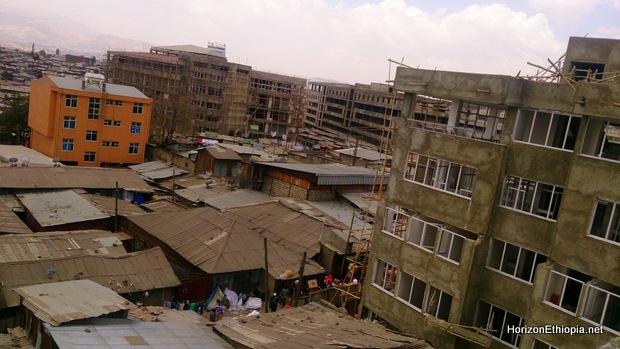
Buyer Beware
As demonstrated earlier, the extraordinarily high lease rates currently seen in Mercato can indeed be justified as long as the buyer can count on rental rates being high and at least staying that way over an extended timeframe.
But what if they don’t?
Given the amount of rental space that will be ‘rehabilitated’ once the LRT work through Mercato is completed and the sizable additional inventory which will be produced by construction currently in progress in the next 1-3 years, there is a good chance that rental rates in Mercato will come down in the near to mid term. On top of lower rental rates, the increased inventory will definitively also result in lower occupancy rates (especially for office space), all of which will conspire to unfavorably impact business models built on today’s relatively stratospheric rates.
If we take a look at what certain levels of rental rate changes do to the critical metrics of rental investments, we find that although there is some cushion in said business models, the results of rental rates approaching those of other areas in Addis (such as Bole), could be significant. Such rates would reduce CoC rental yields to single digits and push Price/Rent ratios into the double digits. This is especially significant considering that whoever ends up owning the plot in question will not be able to recognize any rent until after constructing on it.
Therefore, bidders for the plot would be well advised to carefully consider what may be in store for Mercato rental rates in the next few years and adopt a conservative business model for the formerly ‘most expensive plot in Addis’. Although it is quite likely it will still retain that title once it is placed back on the auction block again.
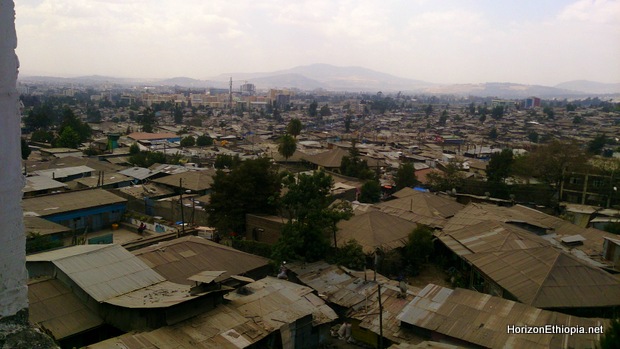
Moderating the Pace of Urban Redevelopment
What’s happening in Mercato is not necessarily a direct reflection of the remainder of the city. There are both significant commonalities and differences. Nevertheless, many indicators suggest that the phenomenon of rapidly escalating lease rates for commercial properties is tied to demand and supply factors that are not entirely ‘organic’ in nature. In my view, this is why lease rates appear erratic and illogical when in fact they are driven by underlying demand for built up rental spaces, both positive and negative supply factors as well as the particular aspects of a given locality (mobility, usage types, restrictions and so forth). Balancing all of these drivers into a logical model that can consistently explain land lease rate movements is a challenging task and in any case would not do much to ameliorate the fundamental problem of their escalations at breakneck speeds.
I believe that the city administration ought to moderate the rate at which the urban landscape is being redeveloped to achieve a reasonable balance between necessary infrastructure development, new construction (of the urban infill nature) and the demolition/reconstruction of existing facilities in the city. Else, we will only face the increasing specter of volatile rents and by extension dramatically escalating land lease prices while our fair city continues to be rebuilt almost from the ground up. And that’s not a phenomenon that only affects the tenants of Merkato’s thriving shops but their customers as well in the form of price escalations on everything they buy from them.


Hi,
I appreciated your article post. I like your article post and it’s very useful blog.
many thanks for sharing us
Hello,
I like your blog post. This is the very useful blog.
Thank You for sharing us
Hi,
This blog very useful, this is a very innovating blog.
Thank You for sharing us
Hello,
This blog is very nice.
Thank you for share us